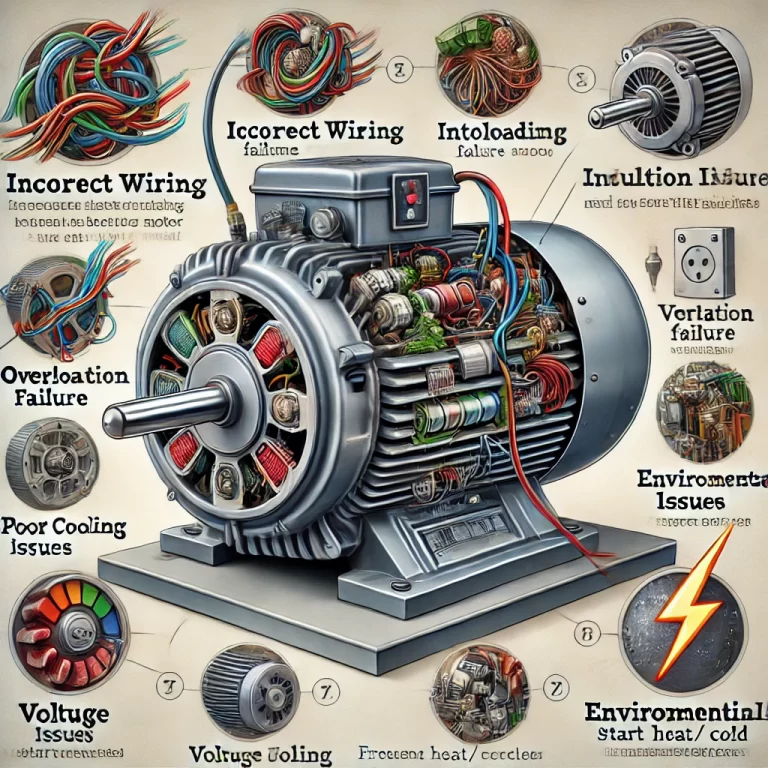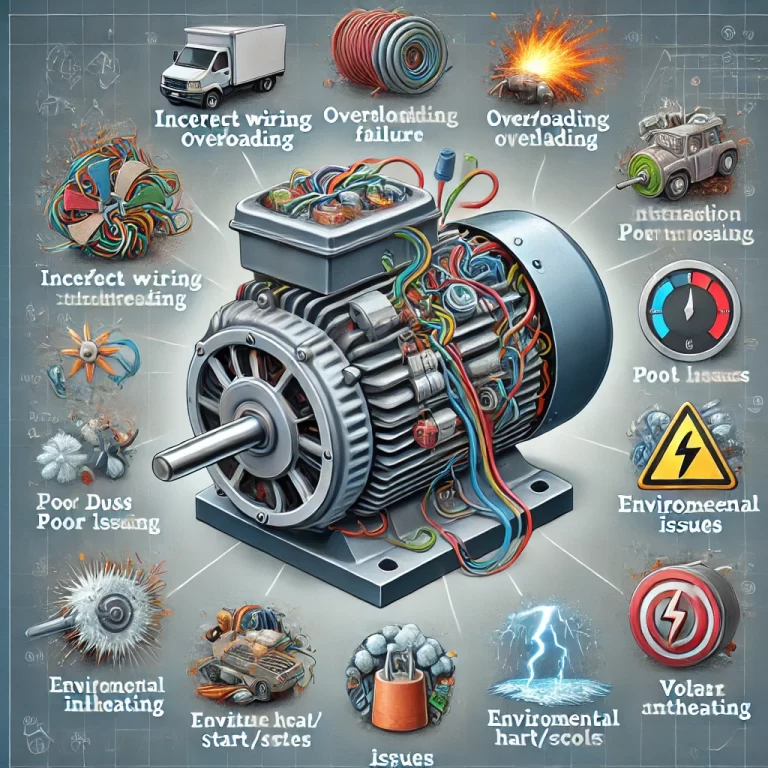Electric motors are critical components in many machines and systems, and when they burn out, it can cause significant downtime and repair costs. There are several reasons why an electric motor might burn out, and understanding these causes can help prevent failures and extend the life of the motor. Below are the seven most common causes of electric motor failure and suggestions for prevention.
1. Incorrect Wiring
Correct wiring is essential for the proper operation of any motor. Always follow the instructions provided on the motor’s nameplate to ensure the motor is wired correctly. A common mistake is switching between star and delta connections. For instance, mistakenly converting a star connection to a delta connection, or vice versa, can lead to improper motor performance and eventual failure if left unchecked. Make sure the wiring matches the manufacturer’s specifications, and avoid any improvisation that could jeopardize the motor’s safety.
Prevention Tip: Always verify the wiring before the motor is powered on, and use a multimeter to check for correct phase sequence and continuity.

2. Overloading
Running an electric motor with an excessive load is one of the most common causes of failure. This happens when a motor is required to drive a load that exceeds its rated capacity, much like a small horse trying to pull a large cart. This overexertion increases the strain on the motor, causing it to overheat and burn out.
Prevention Tip: Ensure that the motor’s load is always within its rated capacity. Regularly monitor the load to make sure it doesn’t exceed the motor’s specifications. Installing a motor protection relay can also help by automatically shutting the motor down in the event of overload.
3. Insulation Failure
The insulation material that surrounds the motor’s windings helps prevent short circuits and electrical leakage. Over time, however, insulation can degrade due to exposure to heat, moisture, or mechanical stress. If the insulation fails, the motor windings may come into contact with the motor frame, leading to short circuits and overheating.
Prevention Tip: Conduct regular inspections of the motor’s insulation resistance using a megohmmeter. Make sure the motor operates in a dry, clean environment, and replace aging or damaged insulation materials before they cause significant problems.
4. Poor Cooling and Ventilation
Electric motors generate heat during operation. If the cooling system (fans, ventilation openings, or cooling ducts) is not functioning properly, the motor may overheat. This excessive heat can damage the motor’s insulation, warp components, and ultimately lead to motor failure.
Prevention Tip: Ensure that the motor’s ventilation system is free of debris and dust. Regularly clean ventilation openings and cooling fans. In environments where high temperatures are common, consider installing an external cooling system or using a motor with enhanced cooling features.
5. Voltage Issues
Voltage fluctuations, including overvoltage or undervoltage, can cause electric motors to malfunction. Overvoltage can lead to excessive current flow, while undervoltage can cause the motor to operate inefficiently and overheat. Loose or corroded wiring at the motor terminals can also create resistance, leading to voltage drops and heat buildup.
Prevention Tip: Install a voltage monitor to ensure that the motor receives a stable voltage supply. Use a surge protector to shield the motor from voltage spikes. Regularly inspect wiring connections to prevent resistance from building up.
6. Environmental Factors
The environment in which a motor operates can have a significant impact on its longevity. Motors exposed to extreme temperatures, excessive moisture, or dust and contaminants are more likely to fail prematurely. For example, high humidity can cause internal components to corrode, while extreme cold can cause lubrication to thicken, impeding motor movement.
Prevention Tip: Ensure the motor operates within the recommended environmental conditions. Consider installing air conditioning or humidity control systems in harsh environments. Protect motors from direct exposure to water, dirt, and extreme weather conditions using covers or seals.

7. Frequent Start/Stop Cycles
Motors subjected to rapid or frequent starts and stops experience mechanical stress that can lead to overheating and premature wear. This type of operation can cause the motor windings to heat up quickly, especially if the motor does not have adequate cooling time between cycles.
Prevention Tip: Minimize the frequency of starts and stops. If frequent cycling is necessary, use a motor with a soft start function to gradually increase the load. Consider adding a time delay between starts to allow the motor to cool down.
Conclusion: Preventing Electric Motor Failures
Electric motor failures are often the result of multiple factors acting together, making troubleshooting and prevention more challenging. By paying attention to the wiring, load conditions, insulation, cooling, voltage stability, environmental conditions, and operational cycles, you can significantly reduce the risk of motor failure.
Additionally, preventive measures such as regular maintenance, monitoring, and employee training can help ensure that motors operate efficiently and safely for a long time. Addressing these factors proactively can save you time, money, and effort in the long run, ensuring the smooth operation of your machinery and equipment.
